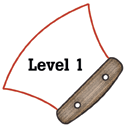
Alaska Science
Key Element A15
A student who meets the content standard should use science to understand and describe the local environment (Local Knowledge).
 |
Alaska Science A student who meets the content standard should use science to understand and describe the local environment (Local Knowledge). |
|
Performance Standard Level 1, Ages 5–7
|
|
|
|
Sample Assessment Ideas
|
Standards Cross-References
|
||
|
National Science Education Standards Organisms have basic needs. For example, animals need air, water, and food; plants require air, water, nutrients, and light. Organisms can survive only in environments in which their needs can be met. The world has many different environments, and distinct environments support the life of different types of organisms. (Page 129) Plants and animals have life cycles that include being born, developing into adults, reproducing, and eventually dying. The details of this life cycle are different for different organisms. (Page 129) All animals depend on plants. Some animals eat plants for food. Other animals eat animals that eat the plants. (Page 129) Earth materials are solid rocks and soils, water, and the gases of the atmosphere. The varied materials have different physical and chemical properties, which make them useful in different ways, for example, as building materials, as sources of fuel, or for growing the plants we use as food. Earth materials provide many of the resources that humans use. (Page 134) Weather changes from day to day and over the seasons. Weather can be described by measurable quantities, such as temperature, wind direction and speed, and precipitation. (Page 134) Resources are things that we get from the living and nonliving environment to meet the needs and wants of a population. (Page 140) Changes in environments can be natural or influenced by humans. Some changes are good, some are bad, and some are neither good nor bad. Pollution is a change in the environment that can influence the health, survival, or activities of organisms, including humans. (Page 140) |
Benchmarks Some events in nature have a repeating pattern. The weather changes some from day to day, but things such as temperature and rain (or snow) tend to be high, low, or medium in the same months every year. (Page 67) Water can be a liquid or a solid and can go back and forth from one form to the other. If water is turned into ice and then the ice is allowed to melt, the amount of water is the same as it was before freezing. (Page 67) Chunks of rocks come in many sizes and shapes, from boulders to grains of sand and even smaller. (Page 72) Change is something that happens to many things. (Page 72) Animals and plants sometimes cause changes in their surroundings. (Page 72) Some animals and plants are alike in the way they look and in the things they do, and others are very different from one another. (Page 102) Plants and animals have features that help them live in different environments. (Page 102) Stories sometimes give plants and animals attributes they really do not have. (Page 102) There is variation among individuals of one kind within a population. (Page 107) Animals eat plants or other animals for food and may also use plants (or even other animals) for shelter and nesting. (Page 116) |
|
Table of Contents | Return to Alaska Native Knowledge Network